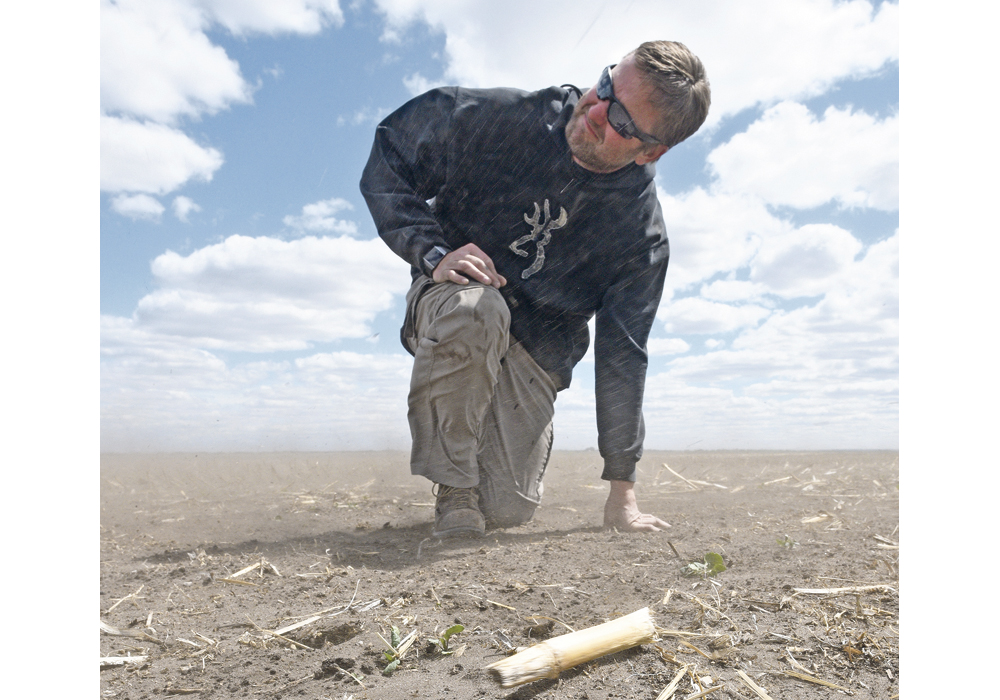Crop development is one to three weeks behind normal across the Prairies.
A satellite map of vegetative growth for the June 3-9 period is mostly all brown or dark brown over the entire region, indicating delayed development.
“Although it has improved over last week, there is still a large portion of the Prairies that is below normal or much worse than normal,” said Gordon Reichert, senior scientific adviser with Statistics Canada.
The map prepared by Statistics Canada’s Crop Condition Assessment Program compares weekly crop development in 2019 to the normal from 1987 to 2018.
Read Also

Canadian Food Inspection Agency extends chronic wasting disease control program consultation deadline
Date extended for consultation period of changes to CWD program
Reichert has seen years with similar dry starts where the crop caught up when weather conditions improved.
Although large portions of Alberta and Manitoba received welcome rainfall last weekend, it is still a worrisome start to the crop year with most of the prairie region having 40 to 60 percent of normal rainfall since April 1.
“We’re going to need some long, soaking rains to help re-establish that soil moisture,” he said.
Russ Enns has received five millimetres of rain on his farm near Osler, Sask., since May 24. The lack of moisture isn’t the only problem.
“We’re getting a lot of wind and dust damage, a lot of plants getting sheared off,” he said.
“We’ve had a couple of dust storms come through where visibility would be half to three-quarters of a mile.”
Enns owns a few irrigation pivots, so he is better off than a lot of growers but he still has some fields in rough shape.
“The canola seems to be taking a pretty good beating, especially where it doesn’t have a lot of shelter from the wind,” he said.
“It’s pretty small and it’s getting beat up pretty bad.”
Other crops appear to be holding on better. The roots are “phenomenal,” digging down in the soil looking for moisture.
The upside is that the weeds aren’t growing much either, so Enns is saving money on in-crop herbicide applications.
The downside is it has been a bad year for insects. Flea beetles and cutworms have been attacking his canola. With high winds, there has been a lot of stem feeding.
Cory Jacob, crop extension specialist with Saskatchewan Agriculture, said crop development depends on the crop.
“The cereals aren’t too bad. It’s more the pulses and the oilseeds that are a little further behind,” he said.
“In some situations we have canola still sitting in the ground because it was seeded in that half-inch and there’s just dust in there.”
Jacob said a province-wide soaker rain is needed to get the crop back on track.
“These small rains don’t do anything. We need a rain that can move down in the soil,” he said.
He is particularly concerned about pasture and hay land. The first cut of hay will be disappointing.
Anastasia Kubinec, manager of crop industry development with Manitoba Agriculture, estimates crops in the province are half a week to a week behind.
“Everything is just that tad slower, which isn’t really bothering us too much just because it has been cool,” she said.
Daytime highs in May were consistently in the high teens versus the high 20s last year.
“That has been a saving grace,” said Kubinec.
If it had been hot and dry crops would be showing more signs of stress. There could be some yield loss for fall rye, winter wheat and forages but other crops can still recover from the slow start.
Canola is probably in the worst shape of the field crops due to the combination of the cool and dry conditions, some frost damage and insect pressure.
Pasture and hay land is worse off than the field crops. This is the second year of dry conditions and there was some overgrazing of pasture last year. Animals are rapidly consuming any green growth.
Mark Cutts, crop specialist with Alberta Agriculture, said it is too early to be concerned about crop development in his province. Seeding just finished in late May.
“I generally don’t get terribly excited in early June,” he said.
“On the annual crops I haven’t heard a lot of concerns about their stage of development.”
There are dry areas of the province but there was enough soil moisture for germination. Farmers will be watching the sky in those areas.
“June is the month when plants put on lots of growth, so they need lots of moisture this month,” said Cutts.
The big concern right now is pasture and hay land. Pastures are struggling and that problem has been compounded by tight feed supplies.
“In certain places, cattle were put out probably a little bit on the early side,” said Cutts.
















